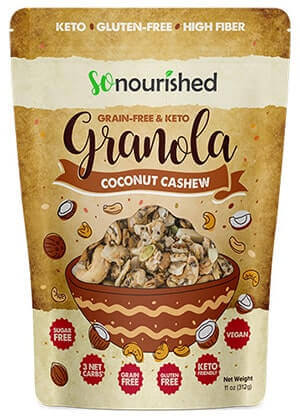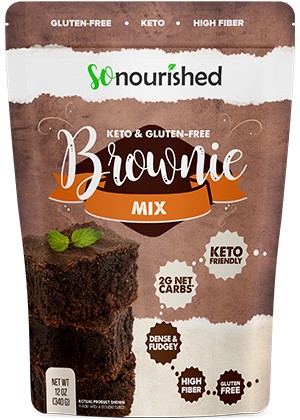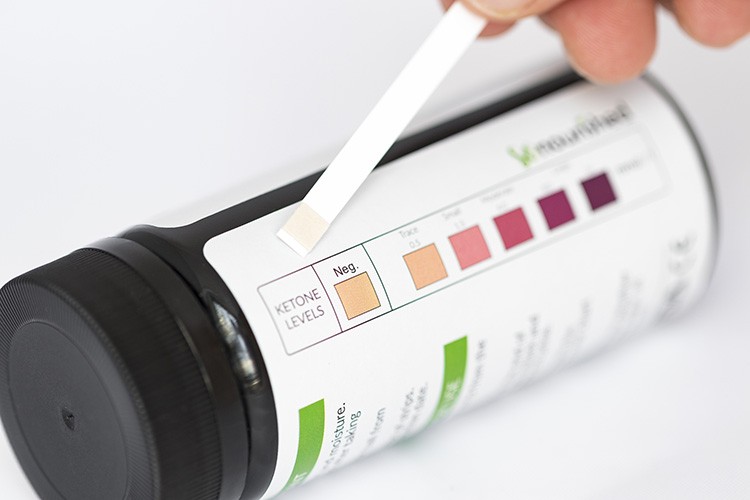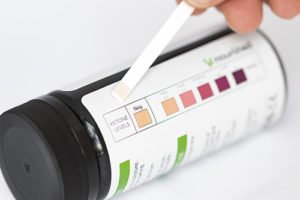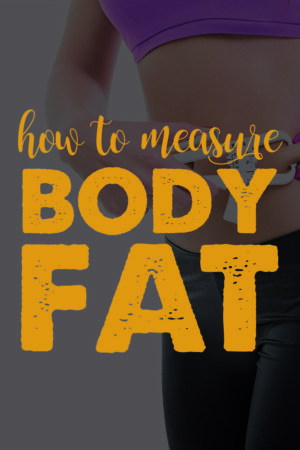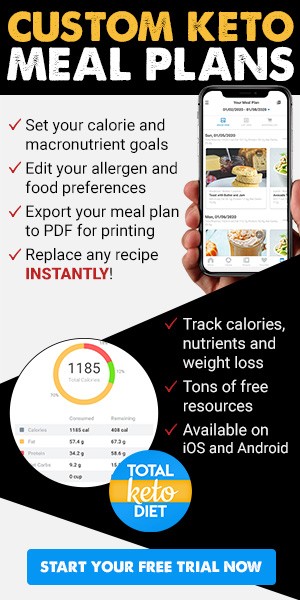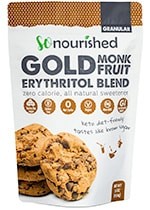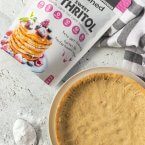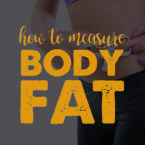Ketones are vitally important to a successful ketogenic diet and there are a few ways to find out your ketone levels – through ketone strips, sticks and meters.
During ketosis, the liver converts fat into ketones – also known as ketone bodies. In turn, these ketones become the main source of energy for the body to run on. If you need a better primer to understand the ketogenic diet, visit our Beginner's Guide to the Keto Diet.
Of course, as with any products, there are pros and cons. Here are three of the best ways to measure the ketone count in your body:
- Urine Ketone Strips – These give accurate feedback to whether or not you are in a state of ketosis. They're quick and inexpensive. Although they are not the most accurate.
- Breath Ketone Meters – The middle ground of ketone measurement devices. More accurate than urine sticks, but do not provide consistent readings.
- Blood Ketone Meters – Highly precise, but are on the expensive side.
Read more below for a comprehensive breakdown of each method. Our recommendations will guide you along on the right path.
Use Urine Ketone Strips To Measure Ketones
If you are on a tight budget for time and money, urine sticks are your best bet to test ketosis quickly. When you are starting out, this is the perfect option. There is no need to pay out more than the cost of urine sticks (100+ strips for up to $10) when learning the ropes of your ketogenic diet.
 How to Use a Ketone Strip
How to Use a Ketone Strip
Urine sticks are a breeze to use. Let your urine stream flow onto the end of a keto stick (with the pad) for a short moment. The color of the strip will change within 15 seconds. The stick will turn light to dark purple depending on your level of ketones in your urine. If it stays tan/gray and does not change to purple, the result is negative and you are not in ketosis. If it changes at all, it means you've achieved ketosis.
Note: If you are diabetic and it is dark purple, this means that your concentration of ketones is very high and you may be experiencing ketoacidosis. In this event call your doctor or go to the hospital immediately.
Breakdown
The strips measure your acetoacetate level, an unused ketone, in your body. The longer you continue a ketogenic lifestyle, the easier it becomes to produce ketones efficiently.
As a beginner to the keto way of eating, a dark shade of purple on the urine strip is expected and normal. Otherwise, a lighter color is commonly found for individuals that have been on a ketogenic diet for more than a few months. This is okay too – it is not a bad thing. Furthermore, if you are a keto veteran, receiving a negative reading may happen as well.
Pros and Cons
Urine sticks are by far the most affordable. You can get a bottle on Amazon for less than $10.
The single most apparent drawback with the strips is their inaccuracy. Hydration plays a role in the results as well. The best time to use them is in the morning when ketone levels in the urine are higher.
Ketone Measurement with Breath Meters
These meters are a small investment – costing you anywhere from $50 to $150. It might be better to hold off on buying one of these breath meters until you are more experienced with keto dieting. After all, these are expensive, but they save you more money over time than constantly buying blood ketone strips. Remember, a breath analyzer is reusable, so it is your best option economically.
How to Use
Simply connect the meter to your computer's USB port. Then, blow or exhale into it. The acetate in your breath is interpreted by the device which translates it to ketone levels.
Using Blood Meters to Measure Ketones
By far, blood meters are the most dependable and accurate method to measure your ketosis level. These devices set the bar in regard to receiving an instantaneous, true reading of blood ketones.
How to Use
The meter requires you to prick your finger just enough for a drop of blood to be released. Then, place the provided strip in the drop of blood and in real-time, a reading will appear on the digital screen.
Are Blood Meters Right for You?
Blood ketone meters may not be right for everyone. The largest downfall is that each strip roughly costs $1 – they add up fast. Also, the strips are likely not covered by your insurance provider.
Different devices vary in accuracy. Slight variations occur from devices and strips of the brand. Sometimes, readings fail altogether – forcing you to throw the $1 strip straight into the trash.
What We Recommend
The meters themselves don't cost much. The strips are where they get you. In addition, most strips are only compatible with their own brand name. Make sure you put two and two together when it comes to buying the strips. We recommend Precision Xtra for an accurate ketone measurement. Be aware that you need to buy more strips as well.
Understanding Ketone Results
A variety of levels is normal throughout your keto journey. These readings provide you with the number of ketones in your blood.
Since blood meters are the most precise, our example follows accordingly. Generally, if your blood ketone level is under 0.5 millimole ketones per liter of blood, you are not experiencing ketosis.
Reducing carbohydrates to below 50 grams of net carbs (not counting dietary fiber and sugar alcohols) is critical to entering ketosis. After about 3 days of eating low carb, you should reach ketosis.
Ketone Range Guide
The numbers below provide a simpler way of understanding ketone levels:
- Negative reading: < 0.5 mmol/L
- Trace: 0.5 mmol/L – 1.0 mmol/L
- Light: 1.1 mmol/L – 2.0 mmol/L
- Moderate: 2.1 mmol/L – 6.0 mmol/L
- Heavy: 6.1 mmol/L – 16 mmol/L
Please note: If you have diabetes, higher levels of ketones (readings over 6.0 mmol/L) are dangerous! These numbers are tell-tale signs of ketoacidosis – a critical condition for your health. Ketoacidosis is usually accompanied by type 1 diabetes because of exceptionally low insulin levels. Seek professional medical attention immediately.
Understanding your ketone levels is critical in the beginning. Afterall, how would you know whether you're doing it right? It'll help you gain confidence in knowing that what you're doing is right and you're on the way to becoming a healthy, fat-burning machine!
NUTRITIONAL DISCLAIMER
The content on this website should not be taken as medical advice and you should ALWAYS consult with your doctor before starting any diet or exercise program. We provide nutritional data for our recipes as a courtesy to our readers. We use Total Keto Diet app software to calculate the nutrition and we remove fiber and sugar alcohols, like erythritol, from the total carbohydrate count to get to the net carb count, as they do not affect your blood glucose levels. You should independently calculate nutritional information on your own and not rely on our data. The website or content herein is not intended to cure, prevent, diagnose or treat any disease. This website shall not be liable for adverse reactions or any other outcome resulting from the use of recipes or recommendations on the Website or actions you take as a result. Any action you take is strictly at your own risk.
- What Is Erythritol? The Keto Sugar Substitute - April 24, 2020
- Ketone Strips, Keto Sticks & Meters – Calculate Your Ketones - January 9, 2018
- What Are Macros? - December 29, 2017




